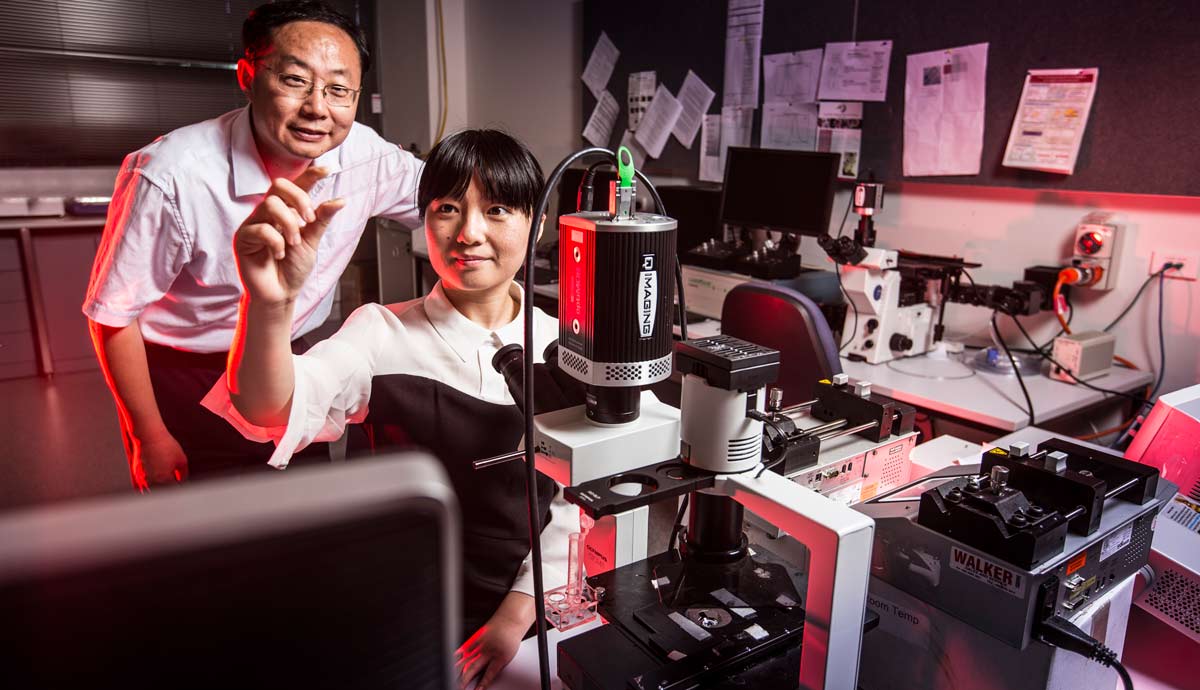January 3, 2017
New method for plasma extraction could improve cancer detection
PhD students develop simple, low-cost device that removes plasma with higher levels of purity.
A new method to separate plasma from blood could have positive implications for cancer diagnostics and prognosis.
Engineering students from the University of Wollongong (UOW) have developed a simple device that extracts plasma from blood with higher purity, leading to a more effective detection of biomarkers from life-threatening diseases.
Led by Professor Weihua Li from UOW’s School of Mechanical, Materials and Mechatronic Engineering, the team of PhD students collaborated with Professor Ronald Sluyter from the Illawarra Health and Medical Research Institute (IHMRI) and UOW’s School of Biological Sciences on a paper outlining the development of a microfluidic device that could control the extraction of plasma.
Professor Li said current methods for plasma extraction are time-consuming, labour-intensive and may impair the substance as it is extracted.
“Due to mechanical stress in current methods, the filtration method has the severe problem of clogging, limiting the purity of plasma extracted,” he said.
“The device we have developed uses a viscoelastic fluid to maintain high levels of purity. By simply adding dissolved poly(ethylene oxide) polymer to the blood, all the blood cells can be focused to a single line and filtrated out from one outlet, thus plasma of high purity can be collected from the other outlet.”
Plasma is rich with biomarkers of various diseases and high-purity separation is required to accurately detect these biomarkers and analyse the plasma without any interference from other cells. The higher the purity of the plasma, the more accurate the detection of biomarkers.
The first author of the paper, PhD candidate Dan Yuan, said the plasma separation purity could reach 99.99 per cent using the microfluidic method.
“The level we have managed to reach is considered very high purity among current plasma separation methods. This method is simple, low-cost, does not have the problem of clogging, could be used in various diseases or cancer diagnostics and prognostics, and its high purity could guarantee the accurate detection of biomarkers in plasma.”
The recently released paper, entitled ‘Continuous plasma extraction under viscoelastic fluid in a straight channel with asymmetrical expansion–contraction cavity arrays’, co-authored by Dan Yuan, Jun Zhang, Associate Professor Ronald Sluyter, Qianbin Zhao, Sheng Yan, Professor Gursel Alici, and Professor Weihua Li, has been published in prestigious science journal Lab on a Chip, and has been selected as the cover page paper.
